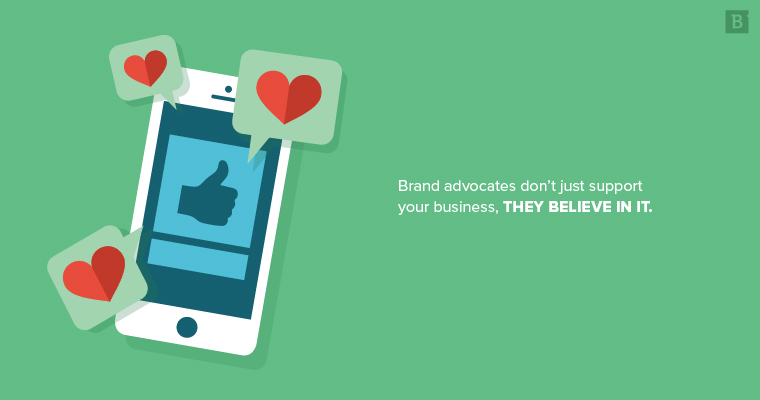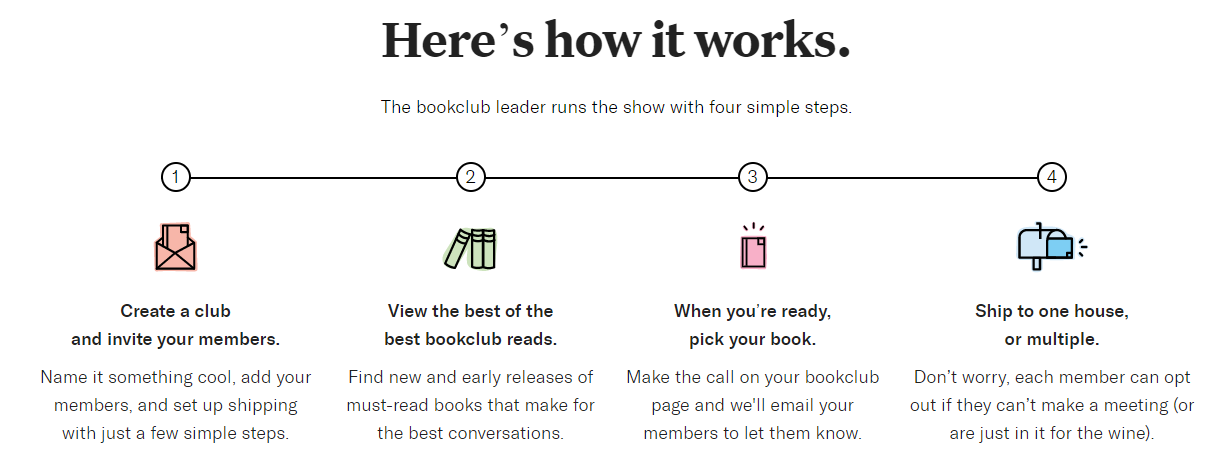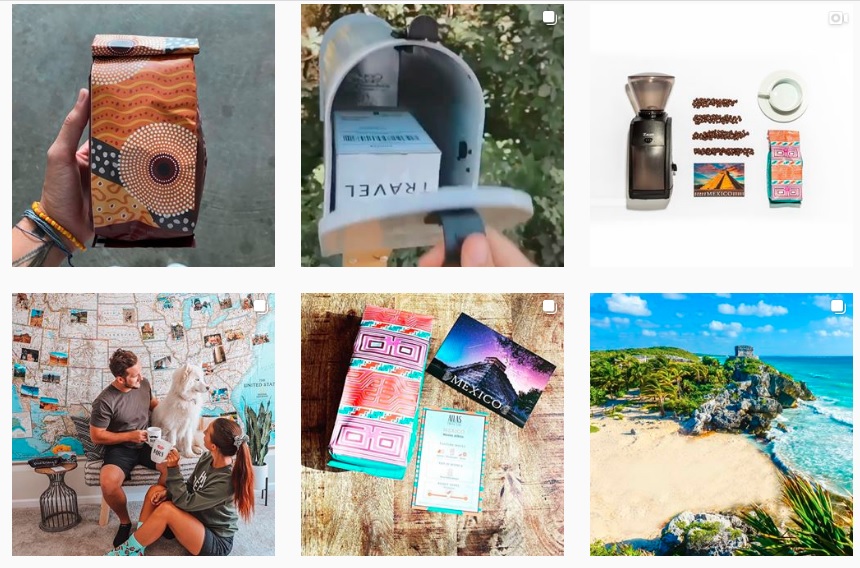Updated September 2020.
I love when people help me with my job — especially when those people really appreciate the work I do.
I’m serious. We all need a helping hand sometimes, and it’s good to have someone in your corner when things get tough.
For businesses, those people are your advocates. They’re your best customers; not just because they buy a lot or are easy to work with but because they believe in your brand and want to help you achieve your company mission.
What’s more, they endorse your company all the time, whether prompted or not. In a way, advocates are the best cheerleaders your business can have.
That’s why it’s important as a marketer to recognize your current advocates and try to cultivate as many additional ones as you can. This is what advocacy marketing is all about.
What is advocacy marketing?
The simple explanation is that advocacy is the last stage in account-based marketing. A better explanation is your marketing efforts should work to turn your clients into customers who not only love your brand but sing its praises to everyone who will listen. It’s word-of-mouth marketing for the digital age.
And we all know that word-of-mouth works.
In a survey from Ogilvy, TNS and Google, word of mouth held the most influence in purchasing decisions among consumers. And let’s face it: We’ve all added something to our Amazon wish list because our friends made it sound cool. (Mine was fancy imported instant ramen packets, for the record).
Also, keep in mind that consumer opinions posted online are the third-most-trusted form of advertising, per Nielsen. If you’ve ever seen a movie with a huge advertising budget but a horrible Rotten Tomatoes score, then you know how much online opinions matter.
Advocacy marketing attempts to fill the gap between traditional advertising and glowing online comments. In a sense, you’re using the first idea to improve the second, creating stronger content that converts people from customers to advocates. You’re also nurturing your existing advocates to strengthen your bond with them.
In this way, advocacy marketing complements your existing campaigns, working alongside them to boost engagement.

What’s a brand advocate, really?
Advocates are those customers who support your business almost as much as you do. They show up to every party with an invite, and they’ll stand by your side when you least expect it.
And they’re happy to do so in exchange for the amazing service you provide.
That’s the thing: Brand advocates don’t just support your business, they believe in it. They agree with your company’s mission, whatever it may be, and fully trust that you’ll achieve your customer-service initiatives. They provide helpful, constructive feedback to improve your product or service, and they may even come up with a new idea of their own.
And lucky for you, their enthusiasm shows itself not just in their level of engagement but in their willingness to praise your brand to other people. Advocates open up a large network of opportunities, ideally extolling your business to their peers, friends and family.
A happy customer is a megaphone for your digital marketing efforts. They can nurture potential customers (aka acquaintances) and strengthen the bond among existing customers. A marketing campaign that draws out these connections is the hallmark of brand advocacy.
Finding your brand advocates
At first, your energy is best spent using advocacy marketing to target your most engaged customers and get them to spread word of your business. This act could be as simple as sharing a LinkedIn post from your brand or tagging your company in an Instagram post.
Clients who are the most engaged and in touch with their designated day-to-day are good people to target. Engage them with personalized marketing emails that allow them to share content on their social pages. Interview them for short videos or case studies, and invite them to any events you host.
Once you’ve developed a strong connection with these people, you can switch to your average customers. These are the people who like your brand well enough but don’t feel any strong attachment to it. With advocacy marketing, your goal is to create content that gets these people to fall in love with your business.
Also, give all of your current and potential advocates your engagement. Hype up their business on social media when appropriate to do so, and share any interesting content the company has created if it’s relevant to your audience. Showing you’re willing to support them (in the B2C space) or their business (in B2B) makes them more likely to invest in yours.
Advocacy marketing examples
Customer advocacy is one of those beautiful moments in marketing — brands gain exposure and referrals; customers enjoy the comradery of a campaign then can enjoy.
Let’s be honest, though. Advocates aren’t always hyper-partisan brand advocates who will do anything for their fav — for free. There’s usually something in it for the advocate (read: kickback swag, referral bonuses or coupons redeemed at a later time), even if they are a happy, loyal customer. Even so, empowering your customers to promote your brand on your behalf adds another dimension to your broader marketing strategy.
Let’s look at some advocacy marketing programs in action.
Book of the Month
Book of the Month — the company behind, you guessed it, sending subscribers one new book per month — does a great job of letting their customers interact with the brand online and with each other.
Through the company’s “Bookclubs,” members are encouraged to form their own groups, add their own friends and select their own books. Then, they can schedule conversations and probably drink wine to set the vibe.

These self-managed groups are run by “bookclub leaders” and help extend the company’s voice into new markets through word of mouth and new subscriptions.
Atlas Coffee Club
Another subscription service, Atlas Coffee Club sources single-origin coffee from across the globe, curates an “artfully roasted” batch and ships to your door every month.
Along with your order of premium coffee, you also receive a postcard with information about where your coffee came from, its tasting notes and how it’s best served. Plus everything is packaged in designs that showcase the local flavors and landscapes of the countries of origin.

This visual array of product materials are meant to be photographed and shared on social media, allowing customers to show “where they’ve been” even if they’re actually stuck at home posting from a smartphone like everyone else.
Tesla
No advocacy marketing post is complete without mentioning Tesla. The electric car manufacturer is a textbook case of earned media.
Brand advocates form their own discussion groups online, launch hashtag campaigns and fancy themselves part of an elite army of drivers with exquisite tastes. Plus, Tesla has an excellent referral program in which existing owners win the chance to attend VIP-only product unveilings.
You can see framework of their referral program below:

For as much as your dad loves to talk about cars, Tesla owners are on another level. The benefactor of this rabid fanbase, of course, is Elon and his company. With millions of customer advocates serving as brand champions — not to mention a healthy stock price — Tesla is a self-perpetuating marketing machine even without devoting much budget to marketing.
Using online platforms for advocacy
Technically, you can use any platform — social media, word of mouth, in-person events, etc. — that resonates with your customers and prospects. If you see the most engagement and shares from your blog, focus your marketing efforts here. If people often retweet your Twitter posts, well, get those fingers ready to type some 280-character statements.
At the end of the day, choosing between LinkedIn, Facebook, Twitter or your blog depends on the content you’re creating and any non-advocacy goals attached to it. Want your content to spread like wildfire? Try Twitter. Want to increase your company’s standing as a thought leader? Craft a well-researched piece for LinkedIn.
Also, don’t forget the power of user-generated content! Blog commenters are advocates in their own way, as are the people engaged in your resource library or forum. It’s also a great way to turn casual customers into advocates by giving them a little individualized attention. Your customers will appreciate being noticed, view your business more favorably and therefore be more likely to recommend your company. You’ll also get all the other benefits of UGC, so it’s a win-win.
Do you really need to focus on advocacy marketing?
The tides of content marketing turn fast, and you may be struggling to finally get a hold on the last major innovative idea in the field. I wouldn’t blame you if you feel a little fatigued, but advocacy marketing really is important enough to pay attention to.
Why? Well, it’s a good supplement to paid ads, which aren’t performing as well across the board as they used to. Last year, brands saw a decline in reach on both Facebook and Instagram, two of the biggest online customer engagement platforms. Lower reach means fewer impressions and engagement, which directly affects your bottom lines. If these trends continue and paid advertising becomes significantly less effective, advocates can pick up some (or even most) of the slack for you.
Advocates, meanwhile, bring that element of third-party trust described above. They’re not paid to advertise your brand, so outside viewers see their enthusiasm for your product as honest and worth considering.
This isn’t to say that paid ads aren’t effective right now: Ads bring in three times more new customers than existing ones, and paid social ad revenue is on the rise. Plus, influencer marketing is proving to be a pretty good investment on its own. But as social reach falls and digital ad costs rise even by small amounts, brands should focus on advocacy marketing to spread word of their business.
Employees as advocates?
Yes, you can use your employees’ enthusiasm as part of your advocacy marketing campaigns. The key here is to make their comments seem organic rather than forced. UGC is great for this; have your employees share behind-the-scenes pictures and videos of themselves and the company. Make sure the copy is casual, not promotional, otherwise it’ll read as an ad, not as natural employee advocacy.
You can also create communities for your employee advocacy, something I alluded to earlier. American Express has its OPEN Forum, which originally started as a networking community for entrepreneurs. It eventually expanded into a content and advice resource, but the community aspect is still a major focus. Wiley, meanwhile, has WileyPLUS Studio, an invitation-only advocate platform where top users can share insights, strategies and more.
Of course, launching your own community forum takes a lot of time and money, not to mention an expert web programmer. You might want to start smaller and build up your advocates on social media first. Then, once you get a large, supportive community, create an exclusive online content source specifically for them. Focus on nurturing other customers to the point where they actively want to join these communities, and you’ve got a recipe for great advocacy marketing ROI.
Writing content for advocacy marketing
Technically, you want all of your content to turn people into advocates. If you plan to dedicate focus to this concept, however, then keep these two ideas in mind:
- Personalization makes customers view your business more favorably. Mention people by name, at the very least.
- Shareable content is easier for advocates to promote, so make sure you have those social icons and plug-ins handy.
Targeting your advocates specifically, again, makes them love your brand and more likely to promote it. If you want a little more guarantee for your effort, however, then there’s nothing wrong with holding a little contest. B2C brands offer giveaways all the time on Instagram, and you can do something similar in the B2B space. Maybe you can offer a free trial of a different service in exchange for user-generated content describing why customers like your business.
Also, sometimes it’s most effective to just talk to them directly. Send an email asking which pieces of content you’ve created resonate best with them, and see what they’d like to read from you in the future. Your advocates will likely jump at the opportunity to contribute. Chances are they aren’t your only customers who have such opinions on what you produce, and creating these bits of content may convert more casual customers into advocates.
Getting customer advocates goes beyond marketing. Your content can help, but it’s your company actions that compel people to advocate on your behalf. Make sure you have an amazing product and stellar company service, then talk about your strong points and get customers engaged.
It’s a long haul to be sure, but it’s worth it.





